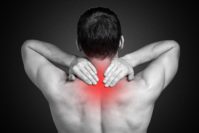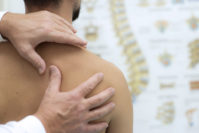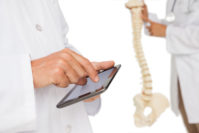Your Posture
Many patients come to see a chiropractor with lower back pain but have no mechanism of injury. They didn’t fall, slip, trip or lift something heavy. They exercise daily, have low stress and work at a desk job all job. Does this sound like you? Well here is one thing we all do that needs to be corrected……..it’s sitting cross-legged.
This has been one thing I found that has helped many patients. It’s such an easy change, but such a difficult habit to change. So how does this sitting position cause lower back pain? Let’s break this down into a simple anatomy lesson to start with and build form there. Your spine has a foundation that is built from the floor up. A change to any part of that foundation will also cause changes further up the chain to help correct that foundation and get things balanced again. The spines foundation is the feet, legs and hips. Each piece is built on top of the other. As one moves out of place it affects the one above and below it. The spine itself sits on the sacrum, which rest between the right and left ileum. (Your hips) These 3 pieces together form the SI joint, which is located roughly at the two dimples just above your rear. We now know the foundation but how does this all fit together?
Unlike a house’s foundation our foundation moves. The hip joint is a ball and socket joint that moves forwards and backwards as we walk, but it is a little more complicated than that. The motion of walking includes the ileum, the sacrum as well as the hip joint. As the leg moves forward the ileum (hip) tilts backwards. You can fill this motion in your hips. Put your hands on your hips and move one leg forward and up. Should feel the hip on the same side tilt back as you do this. Move the leg backwards and you should feel the hip tilt forward. The sacrum, like I said before, is the middle and both ileum rub up against the sacrum. The ileum, more or less, pivot around or rub next to a stationary sacrum. This area of contact is a joint, called the SI joint.
As with any joint in the body, it can get stuck and move in an improper motion there after. At the SI joint, one ileum can get stuck in either a forward of backwards tilt. The place it gets stuck is at the SI joint. Remember when the hip is tilted backwards the leg was coming off the ground in a forwards motion. If the right ileum is stuck at the SI joint at a backwards tilt, then this raises the whole leg up slightly. The more it’s stuck, the shorter the leg becomes because its being raised up by the stuck ileum. This is what a chiropractor calls a “short leg.” A short leg changes the foundation of the spine, with a tilt to the side of the short leg. This is most damaging in a weight bearing position, such as standing or walking. The body is off centered now and will correct itself at the first point it can, the Lumbar spine. (aka-lower back) The muscles in the spine will contract on the opposite side of the short leg, which in turn tilts and twists the spine at that level. This stuck SI joint will cause pain at the SI joint and the lower back. Pain will be at the SI joint on the side of the short leg, and low back pain at the opposite side of the short leg. With this now explained I’ll relate this to the posture of sitting cross-legged and have it make sense.
When you sit cross-legged you can cause 3 things to happen. First you tilt that hip backwards, which can cause it to get stuck at the SI joint. Second you are stretching and weakening the glut muscle on that side. With the SI joint stuck and a weak glut the lumbar spine is affected with self-correction. When you sit with a crossed leg you are bringing that leg up, which tilts the hip backwards. With the raised leg it elongates the glut; stretching it, for a long period of time. This will weaken that muscle. With a prolonged sitting posture like this you are increasing the chances of having lower back pain. See how this is such a bad habit for the spine, it changes its foundation. A chiropractor can fix both the spine and SI joints with adjustments and get your foundation in balance again. As your care is progressing with adjustments, what can you do to help yourself between appoints to your chiropractor? Here is my advice:
1) Sit all the way back in the chair. Your rear should be touching the back of the seat cushion and the back pad. This puts the spine in a more natural position.
2) Keep both feet on the ground.
3) Strengthen your gluts by doing squats. Best results are done with a straight back during the exercise.
4) Be conscious of how you are sitting. Catch yourself sitting cross-legged and correct it. Now that you know the effects on the spine it should be easier.
5) Regularly see your chiropractor to fix small things before they become big things.
If this habit and aches and pains described above sound like you then today is the day to change. Help yourself by changing your habits, and seek out a chiropractor to help you put these changes in motion. I hope that this simple explanation helps you understand your spine and why you are having lower back pain. Not all pain is related to this posture, it is just one of many causes. I closing, pain is the way that the body tells you something is wrong. Listen to it and seek a doctor’s help for treatment.
-Travis Early, DC
reference: www.ncbi.nlm.nih.gov/pmc/articles/PMC4242947


